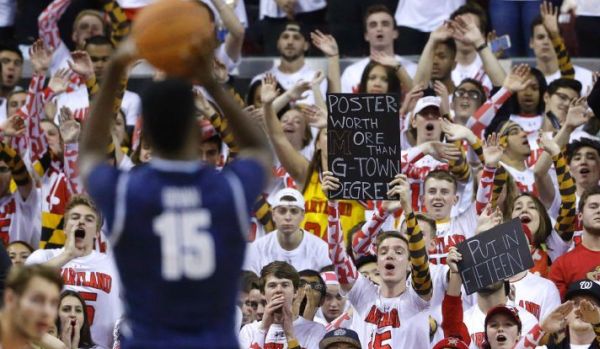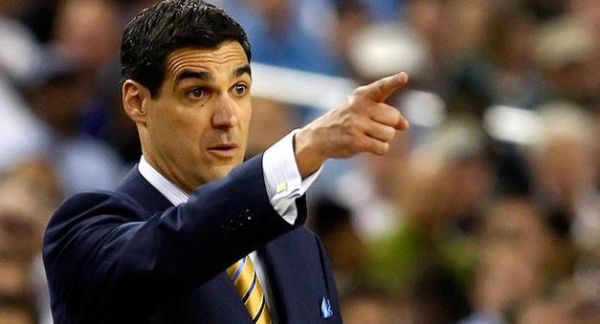Thoughts on the Big East’s Opening Week
Posted by Justin Kundrat on November 19th, 2015Half-empty stadiums, passive fans, and disheveled teams. All of these are commonly found in college hoops in November, and all steadily reverse as the season progresses. Why is it the case that November basketball brings all these out? These games count the same towards the record as the games in February, often providing prime chances for key non-conference wins. It’s a strange time for both fans and players. The former are overlooking many of these games, either writing them off as wins or being simply indifferent towards the outcome. The latter are inexperienced and unable to achieve an optimal degree of chemistry on the floor.

Like the haze from the charity stripe, it has been an up-and-down start for Jessie Govan and Georgetown. (AP Photo/Patrick Semansky)
Which brings us to Exhibit A: Georgetown. How disappointing was a double overtime loss to Radford? Well, very. The poor play of D’Vauntes Smith-Rivera and his surrounding cast of sophomores left much to be desired in the loss to the Highlanders. Somehow though, just days later they gave #3 Maryland everything they wanted in the Comcast Center. Despite ultimately falling short, the positives were numerous. Seldom used senior Bradley Hayes has played out of his mind thus far, displaying very impressive footwork and shot-making ability in the post. Sophomore Isaac Copeland, who may see as many minutes as Smith-Rivera this season, will eventually find ways to be more assertive on offense given his greater degree of responsibility. Freshman Marcus Derrickson shined against the Terps, and it looks as if he will have a chance to provide the Hoyas with a much needed three-point threat. Like last season, it may only be a matter of time before things start clicking for John Thompson III‘s squad.
Similarly young squads Seton Hall, St. John’s and Marquette are all learning on the fly, albeit in an unconvincing manner. Offensive schemes are obviously still being developed, and while all three of these teams have talented pieces in place, the spacing, ball movement and team mechanics have impaired those individual abilities to some extent. Seton Hall shot poorly and turned the ball over at an alarming rate (31.5% of all possessions) but carved out wins over Dartmouth and Wagner on the shoulders of sophomores Isaiah Whitehead and Desi Rodriguez. St John’s Italian import Federico Mussini led his team in scoring for the second straight game, but needs to be more involved on the playmaking front. He has been slow to initiate the offense at times, waiting for cuts and screens that are either mistimed or nonexistent. The Johnnies’ up-tempo pace has masked some of these deficiencies, allowing them to attack the rim or find open looks in transition. Meanwhile, Marquette narrowly avoided what would have been a decidedly bad 0-2 start by escaping IUPUI in overtime. The emergence of 6’5″ freshman Haanif Cheatham, who attacked the rim and created offense wihile the rest of the team struggled, was encouraging. Henry Ellenson struggled to find his shot and was absent on the offensive glass (although successful at getting to the line), Duane Wilson looked flustered while unsuccessfully forcing the action, and the team shot a woeful 3-of-17 from deep.
On the bright side of things in the league, Villanova and Butler are flat out dominating, ensuring that the Big East remains represented in the Top 25 polls. Butler’s one victory came against The Citadel, so a win might not carry much weight, but the Bulldogs did score 144 points — nothing to scoff at. Villanova was nearly as dominant against better competition in destroying any remnants of the “Nebrasketball” bandwagon in a 24-point rout. The guard play has somehow met the impossibly high expectations that existed coming into this season, while soon-to-break-out juniors Josh Hart and Kris Jenkins have erased doubts about filling the shoes of departed seniors Darrun Hilliard and JayVaughn Pinkston.
All in all, it’s been a turbulent week in the Big East. But in college basketball, particularly in November, what else would you expect?











































